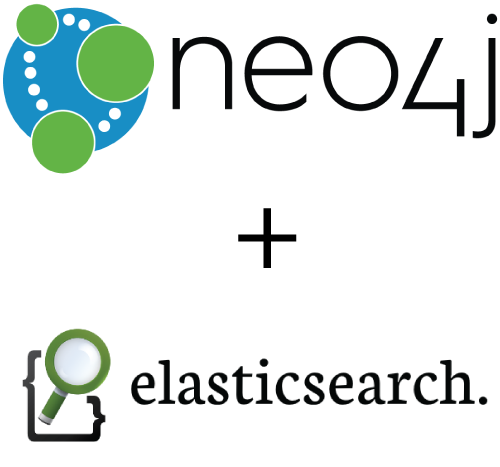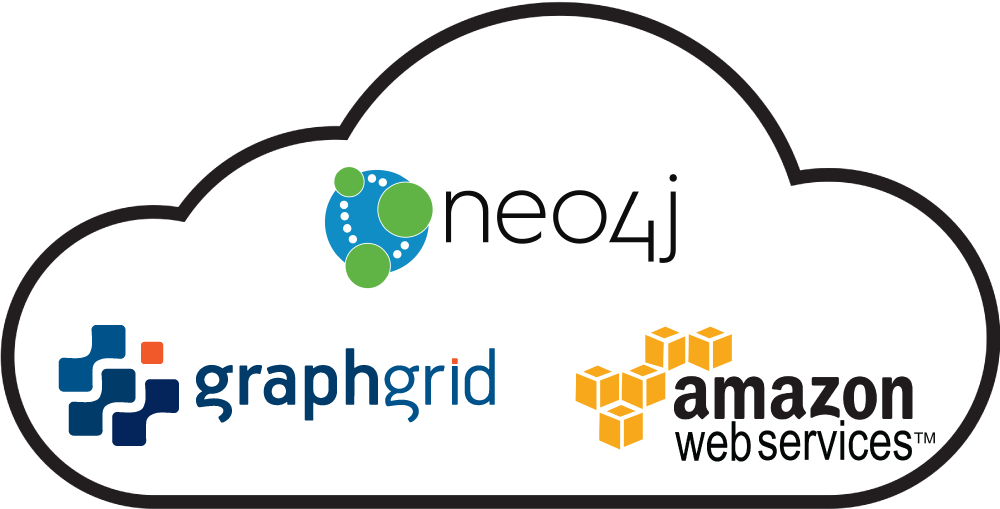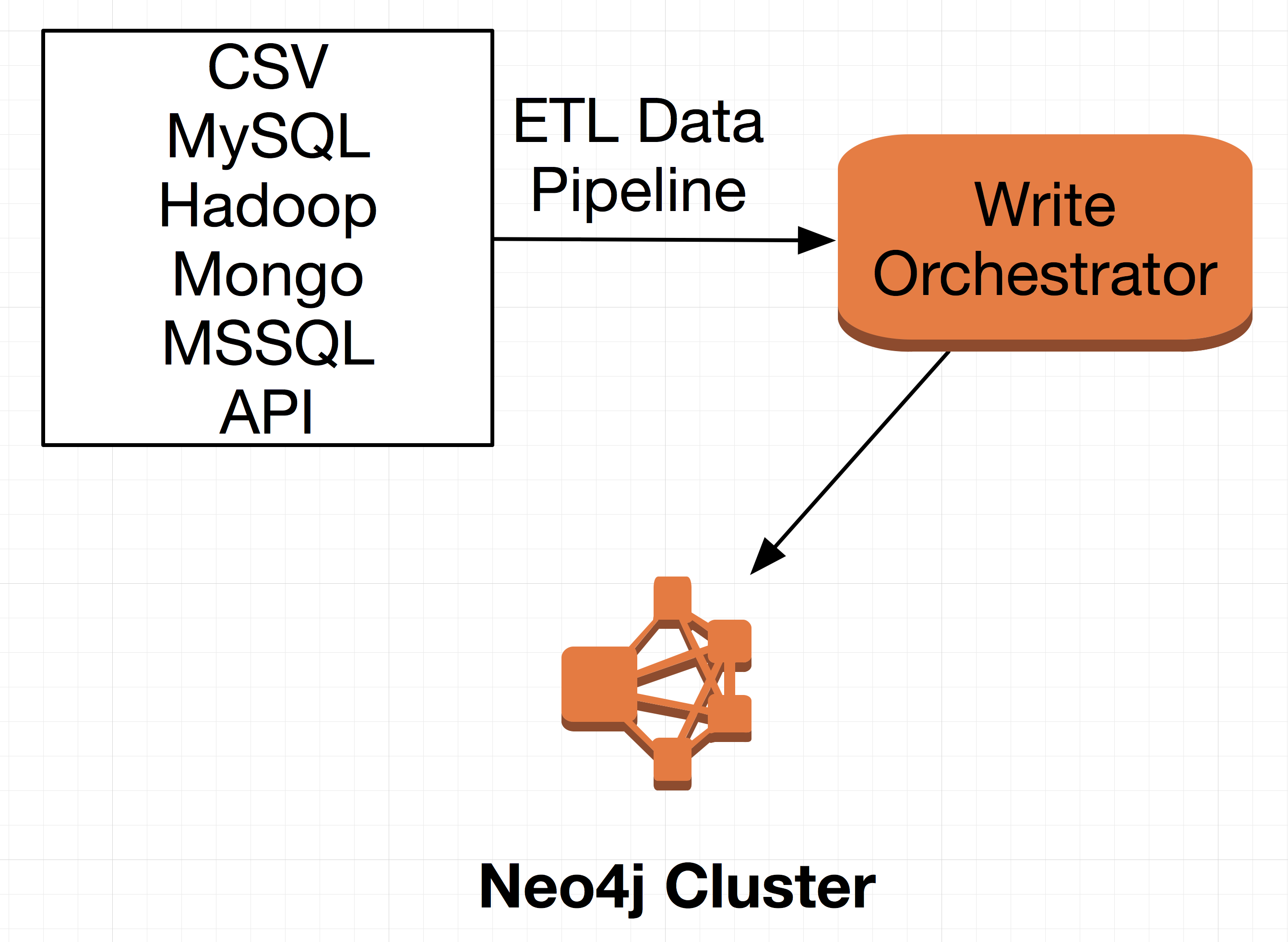 DETACH DELETE in Cypher is an example of why Cypher is one of my favorite ways of interacting with the Neo4j graph database. The declarative graph query language is constantly evolving to ease the requirements of querying Neo4j. This benefit in ease of interaction, however, can often further remove the query writer from needing to understand the inner Read More......
DETACH DELETE in Cypher is an example of why Cypher is one of my favorite ways of interacting with the Neo4j graph database. The declarative graph query language is constantly evolving to ease the requirements of querying Neo4j. This benefit in ease of interaction, however, can often further remove the query writer from needing to understand the inner Read More......Friday, February 26, 2016
Understanding DETACH DELETE in Cypher
 DETACH DELETE in Cypher is an example of why Cypher is one of my favorite ways of interacting with the Neo4j graph database. The declarative graph query language is constantly evolving to ease the requirements of querying Neo4j. This benefit in ease of interaction, however, can often further remove the query writer from needing to understand the inner Read More......
DETACH DELETE in Cypher is an example of why Cypher is one of my favorite ways of interacting with the Neo4j graph database. The declarative graph query language is constantly evolving to ease the requirements of querying Neo4j. This benefit in ease of interaction, however, can often further remove the query writer from needing to understand the inner Read More......Pairing Neo4j ElasticSearch: The Basics
 There are a number of ways of integrating Neo4j with ElasticSearch. One common way was through the use of the Rivers plugin, but that was deprecated in ElasticSearch 1.5 and will likely be fully removed shortly after ElasticSearch 2.0. Going forward any integration will require a more sophisticated integration to index the desired nodes and relationships from Neo4j to ElasticSearch.
There are a number of ways of integrating Neo4j with ElasticSearch. One common way was through the use of the Rivers plugin, but that was deprecated in ElasticSearch 1.5 and will likely be fully removed shortly after ElasticSearch 2.0. Going forward any integration will require a more sophisticated integration to index the desired nodes and relationships from Neo4j to ElasticSearch.
For those that don’t know, ElasticSearch is an open Read More......
Graph Advantage: Master Data Management
 Master Data Management (MDM) is an increasingly complex topic for organizations today. The rate at which data in an enterprise to is flowing and evolving as a business asset, requires a the need for a more flexible and connection-centric master data storage solution. Master Data Management, is a practice that involves discovering, cleaning, housing, and governing data. Data architects for enterprises require a data model that offers ad hoc, variable, and
Master Data Management (MDM) is an increasingly complex topic for organizations today. The rate at which data in an enterprise to is flowing and evolving as a business asset, requires a the need for a more flexible and connection-centric master data storage solution. Master Data Management, is a practice that involves discovering, cleaning, housing, and governing data. Data architects for enterprises require a data model that offers ad hoc, variable, and Read More......
Connected Data Analytics: Basics
 As organizations adopt graph databases, their available connected data will grow, which will drive the need for analytics to leverage the connected data as a core component of their analysis. The key to unlocking new insights is to leverage the connectedness of the data as part of a graph analytics solution. Through graph analytics enterprises have gained competitive advantages because they are now discovering the cause, effect, and influence of certain patterns
As organizations adopt graph databases, their available connected data will grow, which will drive the need for analytics to leverage the connected data as a core component of their analysis. The key to unlocking new insights is to leverage the connectedness of the data as part of a graph analytics solution. Through graph analytics enterprises have gained competitive advantages because they are now discovering the cause, effect, and influence of certain patterns Read More......
Wednesday, February 17, 2016
Graph Advantage: Fraud Detection
Graph Advantage: Fraud Detection
 Financial institutions and insurance firms with traditional fraud detection capabilities lose billions of dollars to fraud. Traditional approaches in detecting fraud play a critical aspect in minimizing financial losses. However, an increasing number of fraudsters have created different methods to avoid being discovered. In order to gain the upper hand again these financial institutions are need to combine the traditional subject matter expertise of an analyst with enhanced exploration and discovery capabilities enabled through a highly connected data set in agraph database Read More......
Financial institutions and insurance firms with traditional fraud detection capabilities lose billions of dollars to fraud. Traditional approaches in detecting fraud play a critical aspect in minimizing financial losses. However, an increasing number of fraudsters have created different methods to avoid being discovered. In order to gain the upper hand again these financial institutions are need to combine the traditional subject matter expertise of an analyst with enhanced exploration and discovery capabilities enabled through a highly connected data set in agraph database Read More......Data Validation and Testing Your Graph Data State
 Data validation lets you gain insight on the quality of your dataassets. This involves grading your organization consistently to monitor your progress. When testing data, it’s essential to set metrics, as well as succeeding steps and goals to drive improvements. Data testing is even more crucial when loading data into a schema free graph database like Neo4j. So how do we it efficiently and continuously?
Data validation lets you gain insight on the quality of your dataassets. This involves grading your organization consistently to monitor your progress. When testing data, it’s essential to set metrics, as well as succeeding steps and goals to drive improvements. Data testing is even more crucial when loading data into a schema free graph database like Neo4j. So how do we it efficiently and continuously?Schema-Free Nature of Neo4j and Data Validation
Neo4j is schema-free by nature, but does provide some schema concepts that can be enforced. This means, when your data flows via your Neo4j data pipeline and graph Read More......Saturday, February 13, 2016
Neo4j Production Ready: Enterprise Cloud
 The cloud today has become the primary deployment option for startups and is gaining adoption across the worlds largest enterprises. As with other critical infrastructure holding sensitive organization or customer data, there are several key questions enterprises must consider when evaluating the Neo4j graph database cloud Read More.....
The cloud today has become the primary deployment option for startups and is gaining adoption across the worlds largest enterprises. As with other critical infrastructure holding sensitive organization or customer data, there are several key questions enterprises must consider when evaluating the Neo4j graph database cloud Read More.....Wednesday, February 10, 2016
Neo4j Production Ready: Security
With cloud adoption consistently accelerating in all organizations and
industries, selecting a Neo4j cloud platform that offers your business
security and scalability while eradicating lead time of
internal-building is important. To simplify such a process for utilizing
Neo4j Enterprise, the GraphGrid Data Platform provides a Neo4j Amazon
Web Services (AWS) cloud offering. This Neo4j Enterprise data platform
not read more.....
Neo4j Production Ready: Deployment Basics
 Neo4j Enterprise enables a high availability cluster using the PAXOS protocol for cluster communication prior to 3.x and the RAFT protocol with the core-edge clustering model is now available in the learn more here.....
Neo4j Enterprise enables a high availability cluster using the PAXOS protocol for cluster communication prior to 3.x and the RAFT protocol with the core-edge clustering model is now available in the learn more here..... Neo4j Enterprise Cluster Basics
 Neo4j Enterprise enables a high availability cluster using the PAXOS protocol for cluster communication prior to 3.x and the RAFT protocol with the learn more.....
Neo4j Enterprise enables a high availability cluster using the PAXOS protocol for cluster communication prior to 3.x and the RAFT protocol with the learn more..... Saturday, February 6, 2016
Neo4j Data Pipeline
Every enterprise has a constant flow of new data that needs to be processed and stored, which can be done effectively using a data pipeline. Upon introducing Neo4j into an enterprise data architecture read more....
it becomes necessary to efficiently transform and load data into the Neo4j graph database. Doing this efficiently at scale with the enterprise integration patterns involved requires an intimate understanding of Neo4j write operations along with routing and queuing frameworks such as Apache Camel and ActiveMQ. Managing this requirement with its complexity proves to be a common challenge from enterprise to enterprise read fully here....
it becomes necessary to efficiently transform and load data into the Neo4j graph database. Doing this efficiently at scale with the enterprise integration patterns involved requires an intimate understanding of Neo4j write operations along with routing and queuing frameworks such as Apache Camel and ActiveMQ. Managing this requirement with its complexity proves to be a common challenge from enterprise to enterprise read fully here....
Keeping Your Data Current and Flowing into Neo4j
For an enterprise to excel today a key aspect centers around utilization of the data-based business assets. To grow and succeed as a whole an enterprise must enable the usability, quality, and constant flow of its data into a connected state. Sometimes, an enterprise with a data architecture
may have to deal with a complex life cycle while undergoing varying transformation processes. This makes it difficult to track the origin and flow of data as well as managing changes, audit trails, history, and a host of other critical processes read more....
may have to deal with a complex life cycle while undergoing varying transformation processes. This makes it difficult to track the origin and flow of data as well as managing changes, audit trails, history, and a host of other critical processes read more....
Introducing a Graph Database into Your Data Architecture
A graph database is capable of offering long-lasting competitive advantages for organizations worldwide from startups to the largest enterprise. Interest within the enterprise sector surged read more....
dramatically the past two years and Forrester recently projected that graph databases will reach over 80% of leading enterprises within two years. Graph databases provide business benefits because graph databases make use of intuitive principles of the connections experienced learn more....
dramatically the past two years and Forrester recently projected that graph databases will reach over 80% of leading enterprises within two years. Graph databases provide business benefits because graph databases make use of intuitive principles of the connections experienced learn more....
Native Graph Database Benefits
Choosing a native graph database provides granular control over all operations from the transactional behavior to on-disk data organization to clustering and driver protocols. With complete control over every aspect of the native graph database, fine-tune graph traversal optimizations can be performed and choices sympathetic to graph principals for reliability and ACID transactional support can be made and implemented without restriction. learn more....
Durability and certainty of the graph database records are crucial to preserve. Choosing reliability and making sure failed graph database transactions roll back maintains a consistent data state in the native graph database read more....
Native Graph Databases versus Non-Native Graph Databases
As with any graph database management system, native graph databases revolve around the idea of storage and use of query engines, which deals specifically with connected data persistence and traversal queries. The database query engine is in charge of operating queries, modifying, and
extracting data. Native graph databases showcase the traversal of the graph data model paired with strategic index usage for locating the starting nodes for such operations. Storage involves how data can be physically housed and how it can be read more....
extracting data. Native graph databases showcase the traversal of the graph data model paired with strategic index usage for locating the starting nodes for such operations. Storage involves how data can be physically housed and how it can be read more....
Subscribe to:
Comments (Atom)




